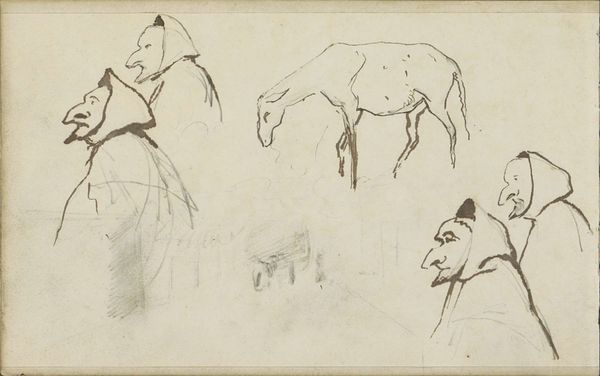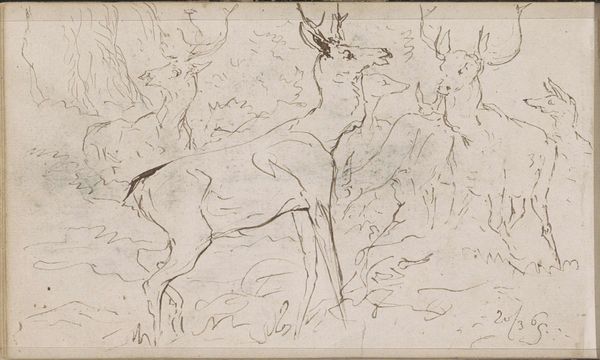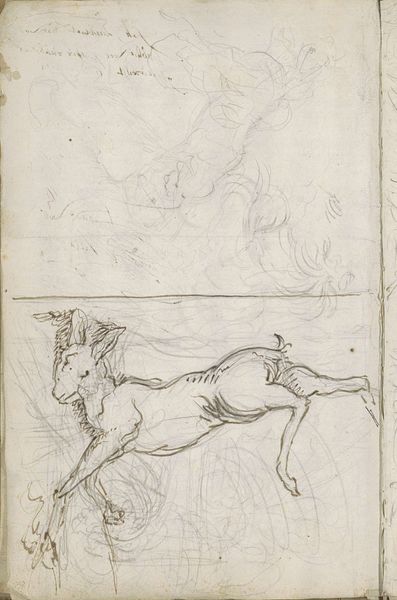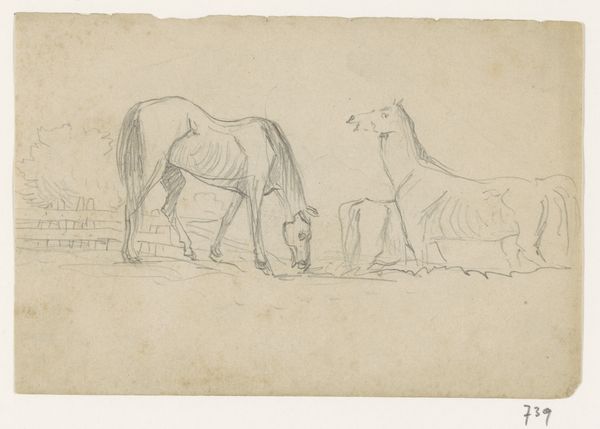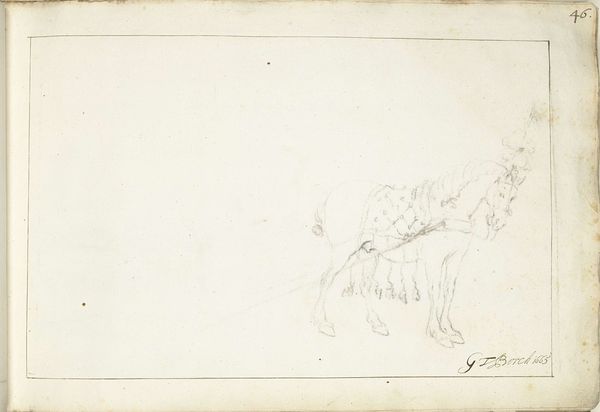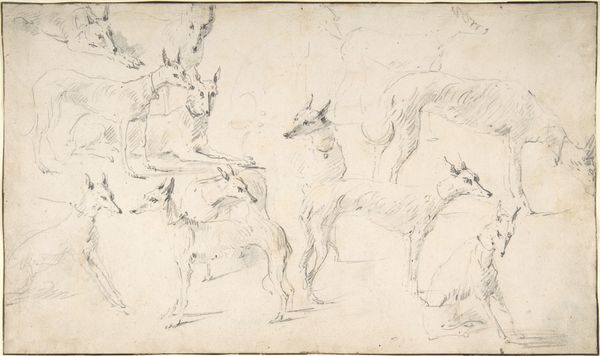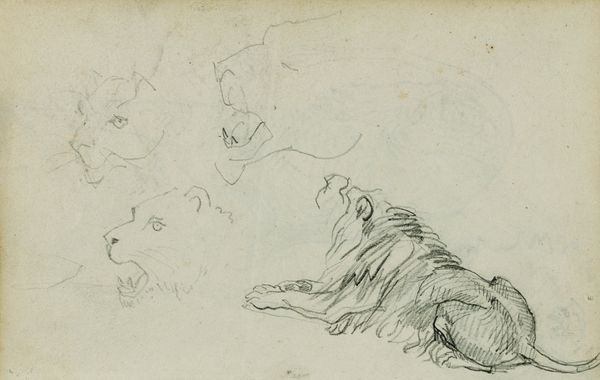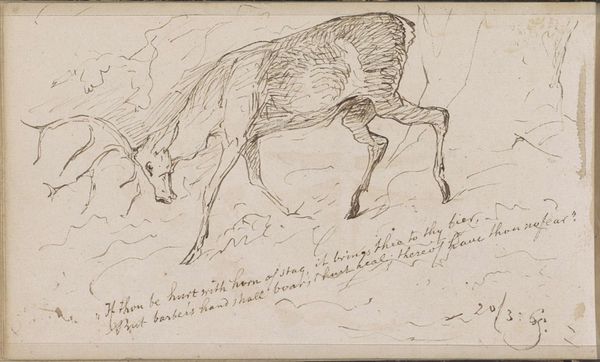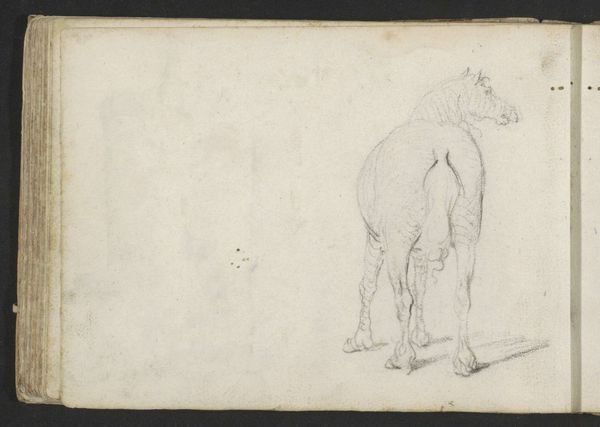
drawing, paper, ink, pen
#
portrait
#
drawing
#
animal
#
pen sketch
#
figuration
#
paper
#
ink
#
horse
#
line
#
pen
Copyright: Rijks Museum: Open Domain
Curator: Here we have "Steigerend paard, een paardenkop en een mannenkop"—"Rearing Horse, a Horse's Head and a Man's Head"—by Johannes Tavenraat. The Rijksmuseum dates this ink and pen drawing on paper to between 1864 and 1880. Editor: It strikes me immediately as a study, almost a sketchbook page. The rough texture of the paper contrasts with the delicacy of the ink lines. There's an intimacy in its incompleteness. Curator: Precisely. The composition is spatially dynamic. The horse's head in the upper right—the primary subject—is rendered with quick, assured lines that convey an incredible sense of pent-up energy, a "Steigerend," rearing tension. Semiotically, the horse itself is, of course, a traditional symbol of power, freedom. Editor: Absolutely. Looking at the process, I’m drawn to how the artist seems to be experimenting. He’s using the ink to its full potential—those deliberate blots and spatters add texture and depth where they could have remained flat. What does this technique suggest about his studio practice? Was he refining a particular form, perhaps for a larger painting? Curator: One could certainly hypothesize along those lines. Structurally, the arrangement leads the eye diagonally from the lower left—the solid, shaded profile of a man—up towards the more ethereal outlines of the other heads. The human figure almost grounds the animal dynamism, providing a moment of stable observation. Editor: The material handling adds to the drama, actually. You see the bleed of the ink into the paper fibers. That kind of direct engagement between the medium and the support—paper was far from universally accessible then; there were certainly choices about quality involved, impacting production. The artist seems keenly aware of that interaction and uses it intentionally. Curator: Indeed, the limitations of the material are cleverly utilized to create the effect of movement. And this notion is central: he takes something static—a drawing—and makes it express unbridled motion through the careful use of line and form. Editor: Overall, considering the physical qualities, I think we see more than just preliminary work here. The artist’s clear manipulation of the materiality indicates conscious artistry in itself, not merely a preparatory sketch. It feels complete. Curator: Yes, I agree. Seeing these rough portraits reminds us of the depth to be found in what might first appear unfinished. Editor: And how understanding the materiality deepens our respect for both artistic labor and intentionality.
Comments
No comments
Be the first to comment and join the conversation on the ultimate creative platform.


